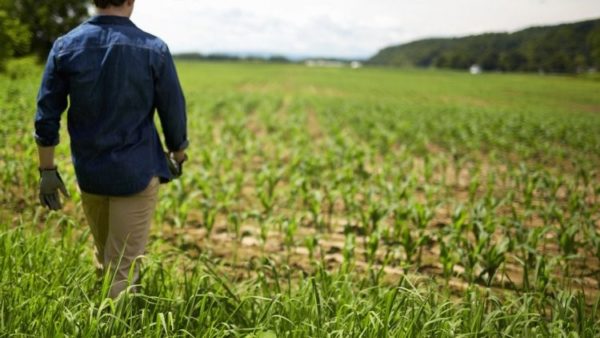What the American Farm Can Teach Business Leaders About ‘Sowing’ Success

Image credit: Mint Images-Jonathan Kozowyk | Getty Images
Zach Ferres – Guest Writer CEO of Coplex last updated September 29, 2019
Opinions expressed by Entrepreneur contributors are their own.
Images and activities revolving around the American family farm are a staple of the autumn season: happy families going apple picking; kids getting “lost” in haystack mazes; harvest dinners, with bountiful feasts. Beautiful photos of harvest sunsets.
But those beautiful images belie the truth: the fact that U.S. farms are under threat. About 117,500 family farms have disappeared in the past eight years, and soon childhoods like my own could become a thing of the past.
In fact, the first 24 years of my life were spent surrounded by corn and soybeans (though we didn’t own a farm). The grass grew tall, vehicles came by only seldom; and the surrounding farmland stretched for miles in every direction of both my hometown and college town. Their combined populations wouldn’t fill a quarter of Fenway Park.
As an adult, and an entrepreneur, I now live far from any cornfield. Yet while I’m no longer around growing crops, many of the lessons from the farm culture that nurtured me come back to me — almost shockingly — in terms of how I run my company today.
Sowing the seeds of leadership
General Stanley McChrystal, a role model of mine, has said that leaders should be more like gardeners than directors. Instead of getting their hands into every task and micromanaging matters, effective leaders simply let the seeds they have planted grow on their own, McChrystal has said.
To operate a farm, you adjust with the seasons; and planning ahead is key. Farmers are smart people who learn from past mistakes. They meticulously prepare their fields, keep a close eye on the weather and strategically select their seeds. Once everything is in the ground, they understand the value of tending without smothering.
Today, their way of life is endangered, unfortunately, but as entrepreneurs, we can learn a lot from the farming lifestyle:
- Watch the forecast.The Farmer’s Almanac was a big deal come winter back when I lived in rural Ohio. Every household had a copy, and farmers scoured its pages for insights about smart planting tips for the next season.
We entrepreneurs, too, need to watch the market for indicators of what the future will bring. It’s easy to get focused on what’s happening today: training new hires, forging a partnership or even just closing the next sale. But such short sightedness is a recipe for disaster. It might be 77 degrees and sunny outside, but if a blizzard’s coming tomorrow, what’s the use?
- Work the seasons.Winter is for planning. Spring is for planting. Summer is for working. And fall is for harvesting. Farmers know how to use each season, and the best entrepreneurs, too.
Elon Musk, for one, understands how seasonality works. He co-founded PayPal – and harvested $180 Million in 2002 – before pivoting to invest in Tesla and SpaceX. After years of planning, planting and working, he reaped another small harvest with Tesla’s Model S.
He’s now planning ahead for his next season with Solar City and Part Deux of his master plan. The best entrepreneurs and leaders understand the cyclical nature of business and don’t stress out when work picks up during the harvest season or slows in the winter.
- Plant the right seeds.Farmers don’t plant without a plan. They first cultivate knowledge of their area’s particular soil, climate and infrastructure. Before committing to a crop, they know they must understand their goals, abilities and the market demand.
For farmers, the wrong choice means at least three seasons of struggle. When entrepreneurs sow the wrong employees in company roles, for example, troubles can last even longer. The right core team will see us through to the harvest.
- Pull the weeds.Weeds don’t just take up space that could be occupied by crops; they strangle nearby plants and, left unchecked, can ruin a crop.
Just as farmers stroll through their fields to pull weeds, leaders must do the same. So, while it’s never fun to fire someone, it’s best to remove a bad employee from the field early. A study reported in Science magazine found that the second wave of recruits drives the growth of a startup. If we entrepreneurs are to succeed, we need to make sure there aren’t any weeds lurking in that group.
- Let the plants grow.Plants can’t be micromanaged. Stand over them, and they’ll never get any sunlight; water them constantly, and they’ll drown. The same is true with employees.
By trying to manage every tiny decision, we rob employees of the satisfaction that comes with success. I struggle with the urge to try to “grow” my employees myself, but it’s important to trust the seeds you’ve picked. Practice servant leadership and give staffers the training, support and resources they need to thrive. Then step back and let them grow.
- Learn from past harvests.Locusts can devastate crops, and — as every farmer knows — forecasts can be wrong. But when disaster hits, good farmers don’t just quit and sow salt into the fields. They work to be prepared, should the problem strike again.
The best entrepreneurs learn from mistakes. When Gary Swart’s Intellibank failed, he refused to give up. “From the mistakes we made, I learned what not to do,” Swart said in a reflective LinkedIn post. After evaluating his mistakes, Swart became CEO of oDesk, now Upwork, the world’s largest online workplace.
By setting aside time every season to review performance the way Swart did, we learn where we’ve gone wrong, what we’ve done right and how to raise a bumper crop next season.
Consider a Family lifestyle farm in St David Springs to help your children learn the lessons so important to sowing success. Plant the seeds, nurture them and give them space to thrive. Don’t start ripping things up and replanting halfway through the summer. Make the most of every season and every plan and prepare for a bountiful harvest. Plan the work and work the plan. What works on the ranch and farm works in business. Do it the way Swart did. A St David Springs Lifestyle farm can be the platform for the success of your young ones.
